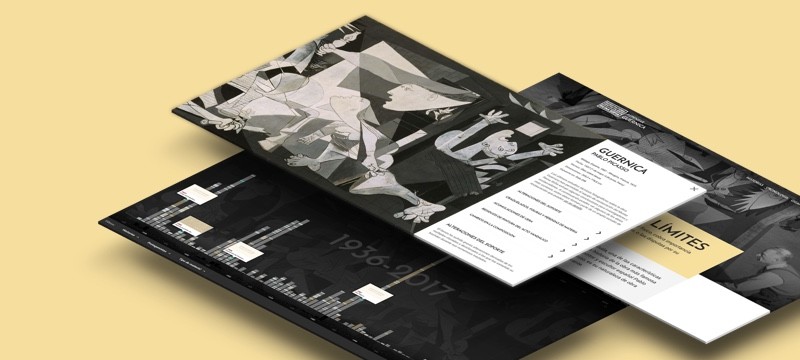Casón del Buen Retiro, Museo del Prado
Designed by Alonso Carbonell and with a domed ceiling painted by Luca Giordano, the Casón del Buen Retiro was built in 1637 as part of Philip IV’s Buen Retiro Palace. Today only this building and the Salón de Reinos remain, with both an annex of the Museo del Prado. In 1971, a decision was made to install a collection of nineteenth-century paintings from the National Museum inside, and years later it would house Guernica and the corresponding preparatory drawings and sketches, after being transferred from the Modern Art Museum in New York. The ensemble of Picasso works was unveiled to the public in October 1981 at the exhibition Legado Picasso (Picasso’s Legacy), and remained at the Casón del Buen Retiro until they were finally moved to the Museo Nacional Reina Sofía in July 1992.
The Casón was originally a Ball Room inside the Buen Retiro Palace, built on land bequeathed to Philip IV by Count-Duke of Olivares, boasting a striking domed central hall, with frescoes executed by Luca Giordano in a depiction of the The Allegory of the Golden Fleece, an homage to the Spanish monarchs from the dynasty of the Habsburgs. Over the years, the original building has undergone different modifications: in the 19th century it was extended to make way for two new Neo-classical façades, designed by Mariano Carderera; and after partial collapse, the western door was replaced with another designed by Ricardo Velázquez Bosco. The appellation “casón” (mansion) originated from the state of disrepair in which the building was left for a long period, and its use for various purposes, until, in 1971, a decision was made to re-model and prepare it to house a collection of nineteenth-century paintings from the Museo del Prado. Currently it is home to the Museo del Prado’s Library and Archive.
On 10 September 1981, Guernica reached Madrid from New York, along with the series of related drawings and paintings — regarded as a symbolic act due to its concurrence with the recovery of democratic freedom. Spain’s Ministry of Culture dubbed the whole process “Operation Big Painting”, in reference to the discrete and secret negotiations that took place in the preceding years. Upon its arrival, the painting was installed in the Casón del Buen Retiro, a site the Spanish authorities considered to be part of the Museo del Prado. Thus, Picasso’s wish was fulfilled: the painting, now in the hands of the Spanish people, was displayed in the National Museum. On 24 October, the doors of the Casón were opened to the public to present Guernica for the first time in Spain as part of the exhibition Legado Picasso (Picasso’s Legacy), whereby Picasso and Joan Miró works were jointly on display.
The Spanish government, well aware of the exceptional nature and brittle materials of Guernica, declared its mission was to insure and protect the work, precisely the same year as the attempted coup d’état, on 23 February, and in the context of a transition to democracy fraught with tension. Consequently, the painting was pre-emptively protected behind a huge bulletproof glass booth, designed by the architect José María García de Paredes. The related drawings, sketches and paintings were also kept in similar conditions, which meant the experience of contemplating the painting was mediated by the huge, staged glass sheets, displaying Guernica as a relic of both Picasso and the Second Republic.




